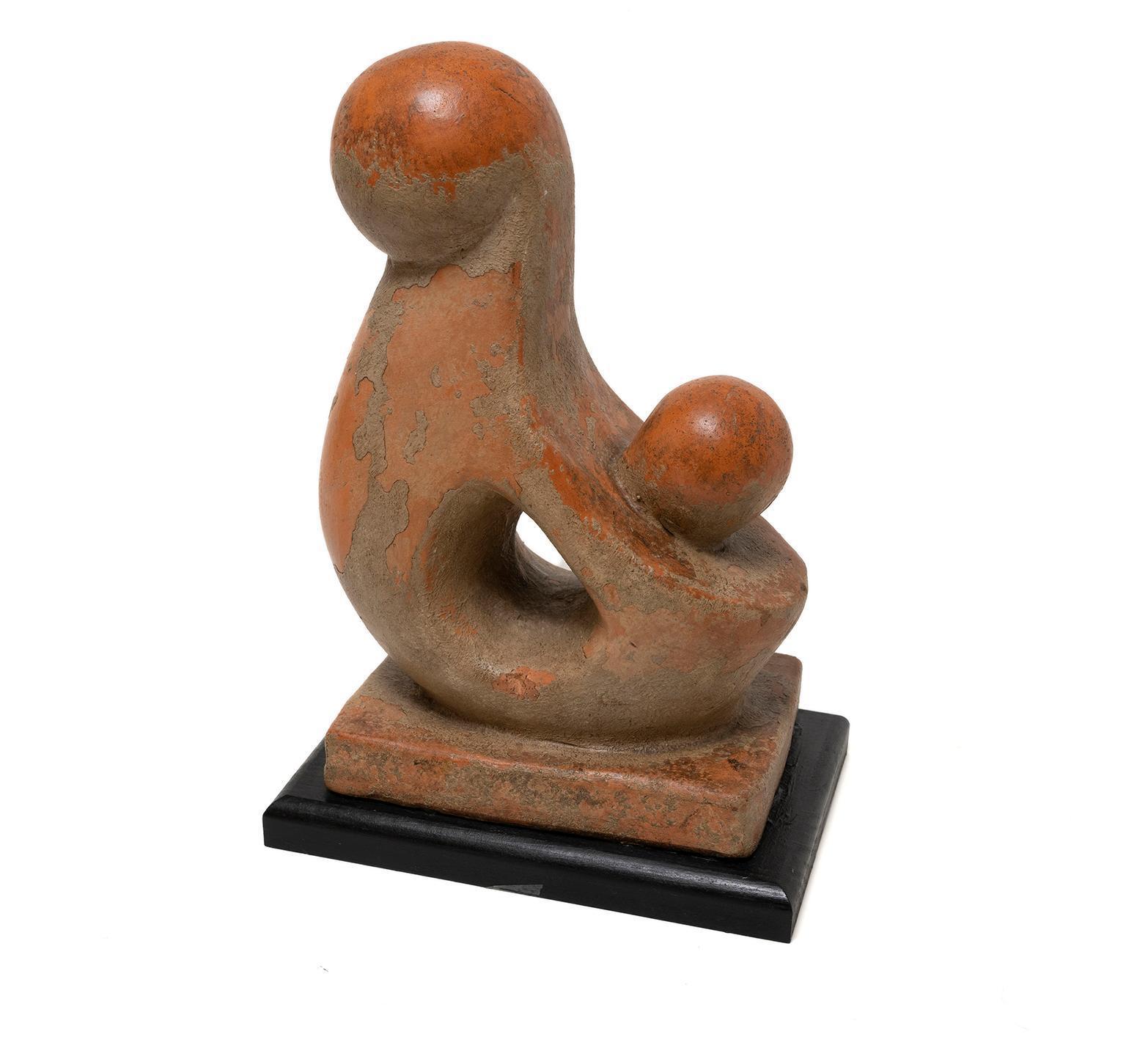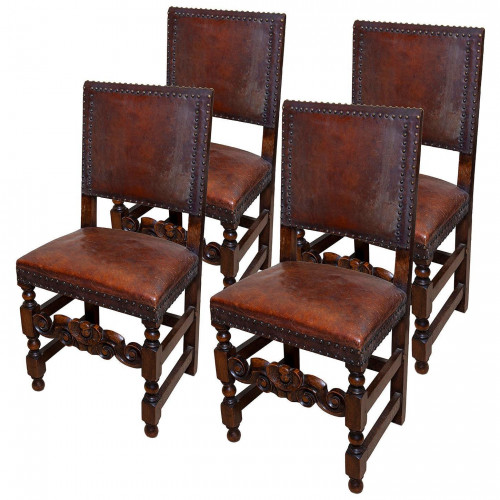Sculpture Terracotta Stone Mother & Child Biomorphic 39cm 15 1/4" high
11778
A 39cm., 15 1/4" high, modernist, biomorphic, terracotta sculpture of a Mother & Child, mid-20th century. Conceived with a stone finish which has partially worn away over time. Possibly originally outside or an architectural embellishment. Artist unknown. Provanance Private Collection. This terracotta sculpture is equally striking displayed inside or outside within a garden. It has a textured stone surface in places. The theme of mother and child was a consistent motif for mid-century modern masters like Barbara Hepworth and Henry Moore.
This sculpture reflects the universal theme of the cycle of life and the evolution of humanity, while expressing the tenderness and care felt by human beings for another. The distinctive pared down, soft form of the mother holding her child creates a rhythmic fluidity in the composition and represents the different cycles of life. The body of the mother is physically fused with her child in a womb-like pose and their intimate bond is illustrated by the way the child is held by the mother as their loving and nurturing gaze is directed at each other. The artist balances the composition with the egg or womb-like form. The artist has reduced the figures to their essential form, removing all features and paring down the form creating a feeling of eternity which is also reinforced by using stone which comes from the earth. The simplicity alludes to divine maternity, although the mother and child are accessible and human, in monumental broad and simple form. length 27cm., 10 1/2" depth 18cm., 7" height 39cm. 15 1/4" Mother & Child The mother and child is a 'subject so consecrated by its antiquity, so hallowed by its profound significance, so endeared by its associations with the softest and deepest of our human sympathies, that our mind has never wearied of its repetition, nor the eye become saturated with its beauty'. (The Legends of the Madonna Anna Jameson) The image of a mother and child summons feelings of warmth, love and protection and is used as a powerful symbolic motif of fecundity, maternity and creativity throughout the history of art. From the fertility goddess figures of the Paleolithic period to the twentieth century, the mother and child theme has recurringly emerged as an empowering, symbolic theme in art used to define a subject's inner reality while presenting it in a new form that illuminates new meanings (Susanne Langer). Changes in beliefs and society are reflected through different portrayal of the mother and child image over time. From the fertility goddess of ancient culture to the symbol of Christianity as the Madonna and Child and, as religious influence on society, declined becoming a secular conception. In the 19th century Mary Cassatt's paintings reflected these changes as the mother and child became a symbol of importance and influence in society and Kathe Kollwitz explored the horrors of human existence through the voice of motherhood. In the 20th century Henry Moore sees the mother and child as the epitome of creativity and allied himself with the mother as a creative force in bringing about form.
20th Century
circa 1950
Terracotta
England
Designers
Mid-Century Modern (Of the period)
GOOD. Wear consistent with age and use.
1














